
A pair of our neighborhood Eurasian Collared Doves, who spent some days a couple of weeks ago building a stick nest among the red geraniums in a neighbor's window box, successfully hatched their clutch of two eggs on Monday, and are now raising two chicks.
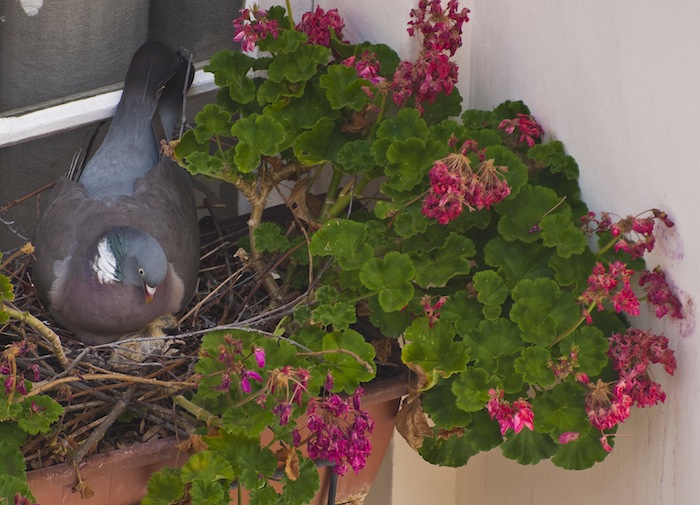 Monday Unveiling
Monday Unveiling
We can't tell the difference between the parents with our naked (or even binocular-clad) eyes, but birding sites say that the male and female work shifts (dad in the day, mom at night) sitting on the babies to keep them warm, and feeding them with the usual partially-digested regurgitated baby bird gruel that parents make. (Let's not go there.)
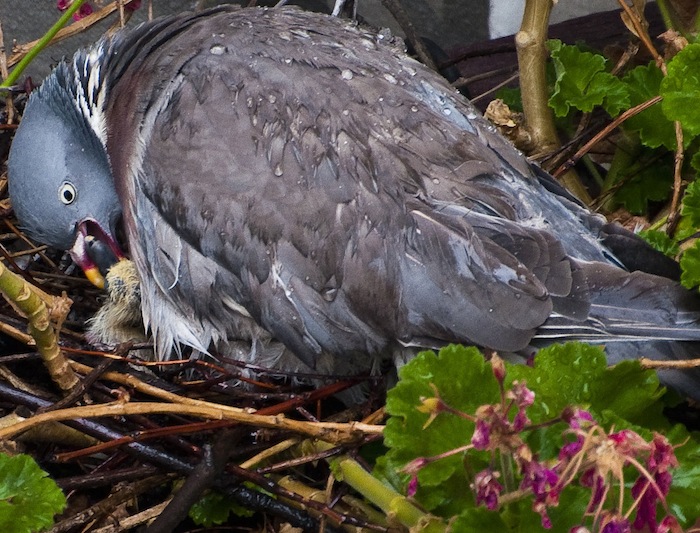 Tuesday it rained, but regurgitation must go on
Tuesday it rained, but regurgitation must go on
Since these pictures were taken in the daytime, this is Dad and the youngsters. The helpless, down-covered babies take from fifteen to eighteen days to become fledglings (with developed feathers, and with wing muscles that are capable of flight). We believe that our human neighbors never open their courtyard windows, which emboldened the Eurasians. The geraniums do well with the oblique sunlight (this view is down to a fourth-floor window box in a six-story building), and with the intermittent summer rains.
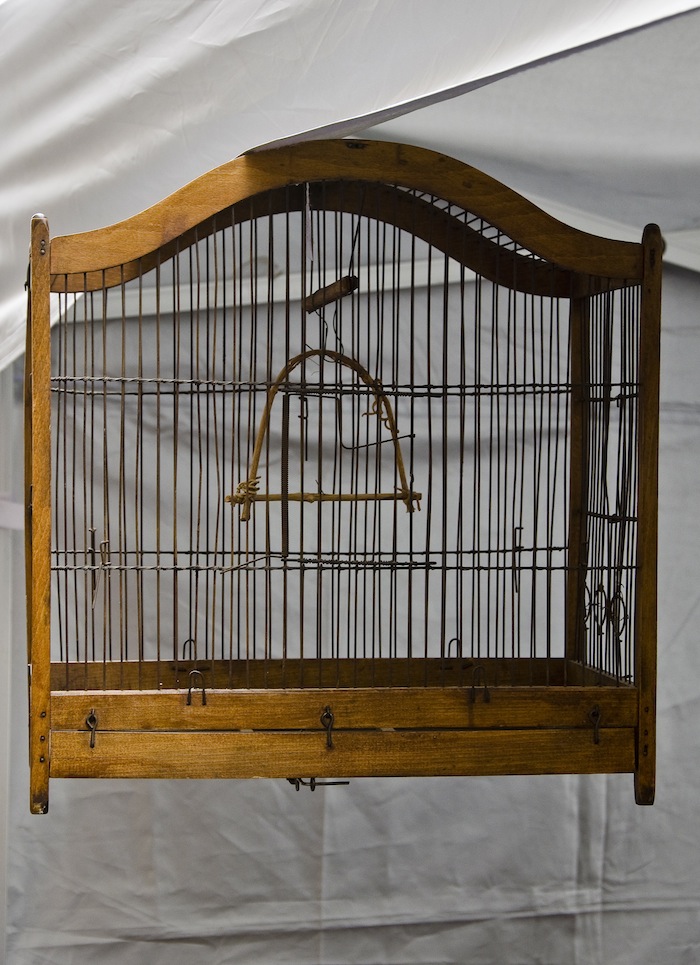
According to Wikipedia, the Eurasians are originally from subtropical Asia, but successfully spread during the 20th Century to inhabit a range from the Arctic Circle in Norway, to the Urals in Russia, and south into Morocco and Egypt. Introduced into the Bahamas in 1970, when it is believed that some pet Eurasians escaped their cages, the species has dispersed primarily into the Gulf Coast, but can now be found as far as Alaska, as far west as California, and as far south as Vera Cruz. Some birding sources speculate that it is filling the ecological niche of the now-extinct Passenger Pigeon. It does not appear to compete with either the Mourning Dove, or with another "invasive" (non-native) species, the Rock Pigeon.
Like swans, the Eurasians are said to be loyal mates.
As recent immigrants ourselves, we welcome our new neighbors, and appreciate their echoing, resonant coo-cooooo-cooing in the courtyard outside our bedroom window. Even Marley, the cat, listens at the window for their music, perhaps more attentively than we.
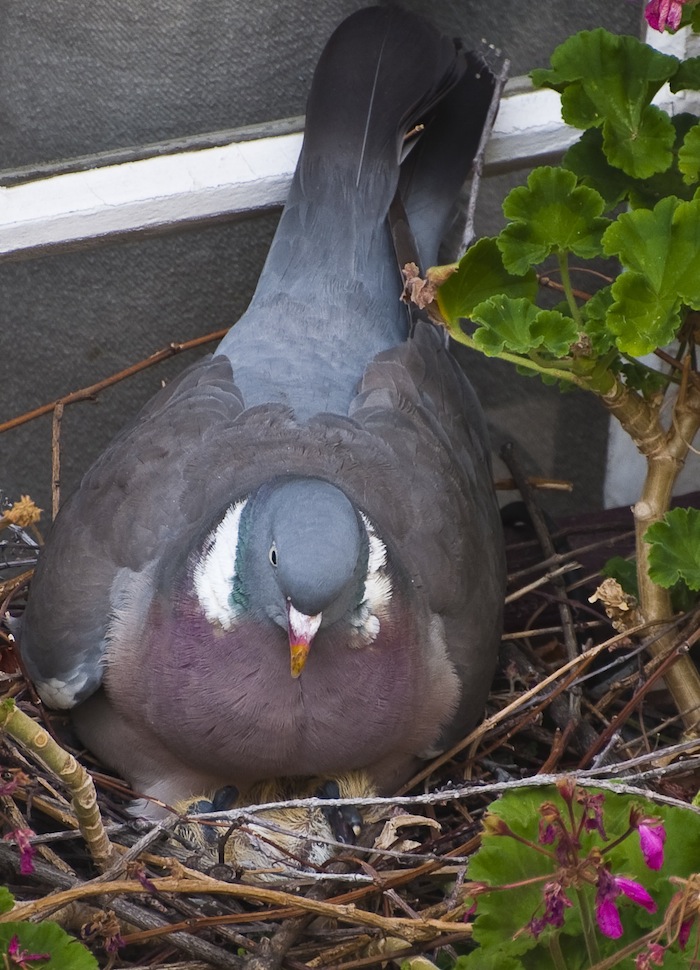 This big on Tuesday
This big on Tuesday
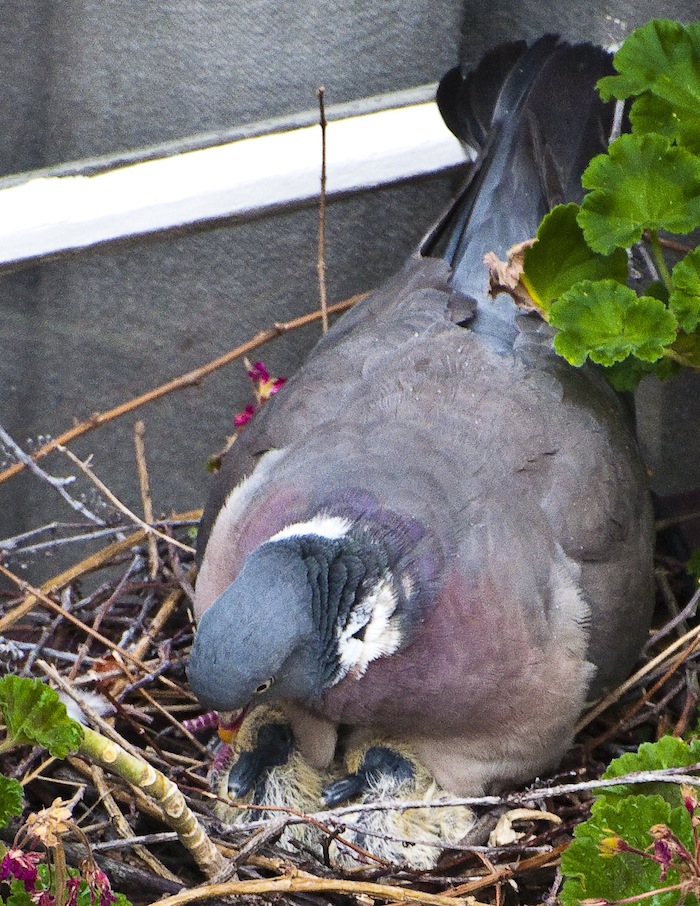 This much bigger on Wednesday
This much bigger on Wednesday
 07.27.2011
07.27.2011 

 birds,
birds,  doves,
doves,  neighbors,
neighbors,  twins in
twins in  Paris Life
Paris Life 






